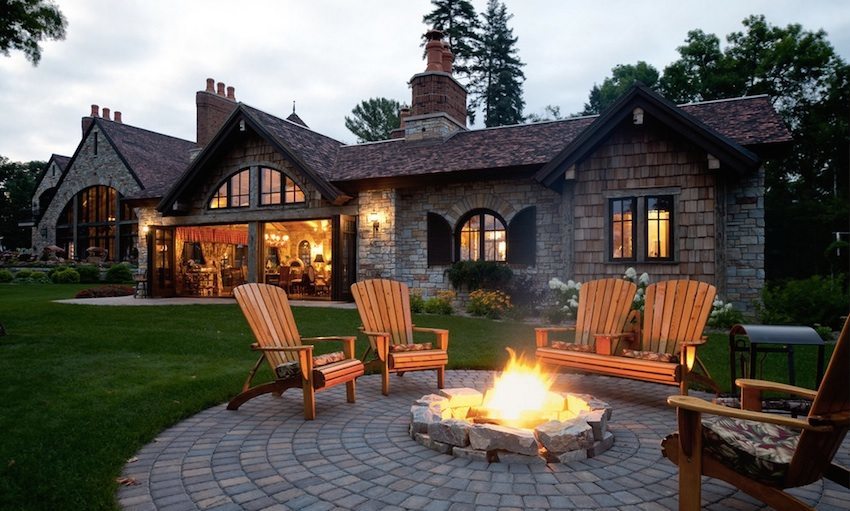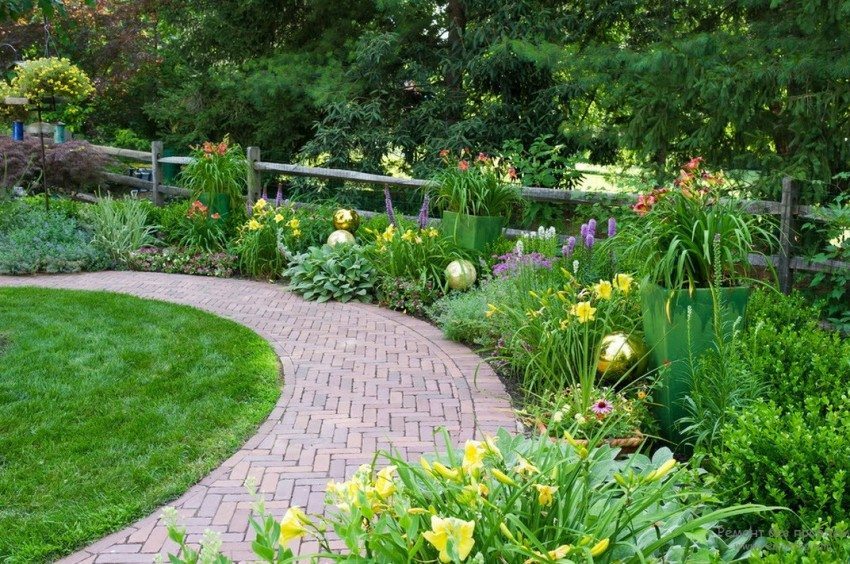
Concrete block with the capture system for hands and "groove-ridge" is easy enough in laying
Content
- 1 What is the aerated concrete
- 2 Technical characteristics and physical properties of concrete blocks
- 3 Aerated concrete blocks: the pros and cons, expert reviews
- 4 Aerated concrete and foam concrete: it is better
- 5 How to calculate the number of aerocrete for building
- 6 Aerated concrete blocks: the size and the price per share of the leading manufacturers
What is the aerated concrete
In an effort to simplify the process of construction of the buildings and to make building materials more accessible vendors offer new solutions. One of them is the creation of cellular concrete. Aerated concrete - a type of porous concrete, in fact, an artificial stone with spherical cells.
Make it of cement, silica sand and specific blowing agents (aluminum paste or suspension). Sometimes further added gypsum, fly ash, lime. The mass is then subjected to continuous heat treatment under high pressure in autoclaves. The chemical reactions cement slurry is foamed and solidified with the already-formed pores.

When building a house note the different sizes gazoblokov
Choosing aerated concrete blocks (size and price per share will be discussed below), the following criteria must be considered:
- the total load on the walls;
- thermal performance;
- the proportionality of the masonry;
- ways to simplify the construction process;
- aerocrete sizes depending on the size of the building design;
- price.
Technical characteristics and physical properties of concrete blocks
If you decide to use in the construction of concrete block, you must have an idea of its main technical characteristics. This will help make the best choice and avoid wasteful investments.

By increasing the density increases aerocrete margin
Basic dimensions. of aerated concrete blocks are of different sizes, it allows them to more accurately calculate the right amount. The most popular are: 600 × 300h200, 600 × 300 × 250, 400 × 300 × 200, 600 × 300 × 300, 400 × 300 × 300, 600 × 400 × 300, 400 × 400 × 300 and 500 × 400 × 300 mm. Knowing the size you can calculate how many pieces gazoblokov cubed and, accordingly, how much they need for the construction of the building with the specified technical parameters.
Density. Mark on the density is measured in kg / m³. In accordance with GOST 25485-89 (cellular concretes) aerated density divided by thermal insulation (D300-D500), heat insulating (D500 - D900) and structural (D1000 - V1200). The greater density of the aerated concrete block, the greater its load bearing capacity.
Strength class. This indicator determines which axial pressure can withstand the block. For example, the strength class B2.5 allows to apply such a block in the construction of load-bearing walls in height and 20 m values following parameters:. Q1.5, V2.0, B2.5 and Q3.5.
Comparative table aerocrete characteristics and other materials:
| Specifications | Brick wall | The wall of the porous ceramic blocks oversized | Aerated concrete wall blocks of industrial production | |
| Brick, | silicate brick | |||
| Compressive strength, kg / m² | 125 | 150 | 128 | 15-30 |
| The average density, kg / m³ | 1350 | 1750 | 830 | 400 |
| Thermal conductivity, W / (m * ° C) | 0,40 | 0,95 | 0,21 | 0,1 |
| Water absorption,% | 13 | 13 | 12 | >30 |
| Frost resistance, cycles | 35 | 35 | 50 | 25 |
| Regulatory wall thickness, m | 0,52 | 0,52 | 0,38 | 0,40 |
| Speed regulatory erecting wall thickness, h / m² | >3 | >3 | ∼1,3 | ∼0,88 |
Coefficient of thermal conductivity. This indicator has the following values: 0.096, 0.12, 0.14 and 0.17, and means the ability of a warm room "share" their warmth with a cold. The higher the ratio, the greater the heat transfer. In determining the most appropriate for you factor must always be taken into account humidity.
Frost resistance. Indicator hardiness is measured in cycles, and for the concrete blocks is from 25 to 100. For comparison, brick It has up to 50 frost cycles.
Drying shrinkage. This is measured in mm / m and should be no more than 0.5, otherwise you risk to be seen on the walls of your home more shrinkage cracks than provided for guests.

Gazoblok bonded to each other or a special adhesive for aerated concrete or grout
Useful advice!For uniform drying to avoid shrinkage cracks, experts recommend to humidify aerated structure constructed to evenly drying occurred.
Aerated concrete blocks: the pros and cons, expert reviews
Let's see what makes concrete blocks so popular and in demand in the construction industry, and any doubt arise when using them?
Related article:
Specifications, dimensions and prices of foam blocks. Advantages and disadvantages of the construction of aerated concrete blocks. Dimensions and prices of foam blocks. Application. The choice of foam blocks: technical specifications.
Advantages of concrete blocks:
- aerated concrete blocks are simple in handling: they are easy to saw, drill a hole in them, to hammer a nail, to plane the desired shape;
- they have a small weight in the impressive dimensions. This greatly increases the speed and reduces labor costs in construction;

Smooth autoclave stacking concrete blocks is performed using a spirit level
Speaking about the pros and cons of concrete blocks, it is worth mentioning about their shortcomings, which should be considered when choosing the material for the construction of:
- the higher the density of aerated concrete, the lower its thermal insulation properties;
- aerated concrete blocks density below 500 kg / m³ can be used more as a heat-insulating material. But a density of 500 kg / m³ has a boundary definition. The ability to use building blocks with a density in the load-bearing structures are made by manufacturers and test results;
- aerated concrete material is not elastic. In this regard, the deformation of the foundation wall gazoblokov can give cracks. Therefore, the construction of porous concrete are advised to erect monolithic strip foundations, which may lead to rise in price of construction;

tongue and groove system serves as a "thermal lock" and allows not to apply the adhesive on the vertical seam
Useful advice!aerated concrete blocks should be selected to build a house with a load-bearing capacity and good thermal insulation with a density of 500 kg / m³, to take care of a solid foundation and a vapor barrier, as well as use for laying special thin-layer glue.
Aerated concrete and foam concrete: it is better
Both materials are made according to GOST same and have similar physico-technical properties. Foam also has a porous structure, it is produced from a cement-sand mixture with the addition of blowing agent. The difference from gas concretes is that the foam cures naturally aerated and - by heat treatment. Also for these materials, various foaming agents.

Binding brick lining and the wall of the filler blocks
In determining what is better: aerocrete or blocks, you must know that the foam blocks production technology is simple and does not require factory conditions. Therefore, they can be produced on the portable equipment directly on site. Such availability is not always on hand to consumers: the production of foam blocks are often involved in unscrupulous manufacturers, which greatly affects the quality of the products.
Aerocrete also produced in large enterprises that adhere to the required regulatory indicators.
It is important!When buying foam concrete blocks from small manufacturers bother to check the necessary permits and certificates of quality.

Good adhesive provides strong adhesion between a block
The block of foam may have toxic properties, since curing process occurs naturally and chemical processes can not be completed until the end. Processing the gazoblokov in autoclaves guarantees the completeness of the chemical process and environmental safety of the product.
Different production methods also affect the mechanical strength of the compared materials. For the same density aerated firmer foam. For example, at a density of 500 kg / m³ aerated concrete may be used as supporting structures in such a foam index can only be used as a heater.
Water absorption and frost resistance, too discord, these building materials. Aerocrete absorb more moisture, which affects the performance of heat and frost. However, this problem is solved by plastering.

Technology of production of autoclaved aerated concrete
In addition, the foam blocks sizes are not always standard. Foam concrete is crumbling, so the treatment is not as malleable as aerated concrete and in the process may crumble.
A significant advantage of foam blocks in price. 1 m³ of foam blocks is less at 400-800 rubles than aerated concrete. The price affects the cost of production, production equipment, component parts and technologies used.
Thus, to say unequivocally that it is better for building House: aerated or foam - it is impossible. The choice of construction material depends on the purpose of application, the quality of materials and compliance processes during its manufacture.

From compliance process gazoblokov masonry depends on the reliability and durability of structures erected
How to calculate the number of aerocrete for building
To acquire excess amounts of building materials can make an approximate calculation of the required number of aerocrete. You can use the following formula:
(LhN-Spr) h1,05hV = Vwhere
L - total length of the aerated concrete walls, m;
H - average height aerated concrete walls, m;
Spr - the total area of windows and doorways, m²;
1.05 - coefficient reflecting margin of 5% to trimming;
B - blocks thickness m;
V - volume required amount aerated m³.
Based on the formula, you can make the following calculation table amount gazoblokov cubed:
| Gazoblokov Dimensions, mm | Stuck in a cube |
| 600×200×300 | 27,8 |
| 600×250×50 | 133,3 |
| 600×250×75 | 88,9 |
| 600×250×100 | 66,7 |
| 600×250×150 | 44,4 |
| 600×250×200 | 33,3 |
| 600×250×250 | 26,7 |
| 600×250×300 | 22,2 |
| 600×250×375 | 17,8 |
| 600×250×400 | 16,7 |
| 600×250×500 | 13,3 |
Such calculation is approximate and is more of a suggestion. On Web sites of manufacturers and sellers of concrete blocks can be found on-line calculators for necessary calculations. It is also possible to immediately calculate the cost of construction, taking into account the size and price gazoblokov apiece.
Aerated concrete blocks: the size and the price per share of the leading manufacturers
Gazoblokov production takes a lot of companies producing building materials. Demand aerated concrete blocks domestic manufacturers such as IVF (Yaroslavl), GRAS (Maloyaroslavetz), BONOLIT (Old Kupavna), Thermocube (Kostroma), DRAUBER (Elektrostal), YTONG (Mozhaisk), El-BLOCK (Kolomna), PORITEP (Novomichurinsk), AeroStone (Dmitrov) LZID (Lipetsk), SilAbit (Old Kupavna). These companies have the necessary equipment and trained personnel. Their goods are certified and have the proper quality.

Aerocrete are used in low-rise construction for interior and exterior load-bearing walls
The price depends on Aerated density, thermal conductivity, frost indicator, and other specifications. At the same density and size gazoblokov prices of domestic companies with the same product specifications are not too different. For example, the cost of a cubic meter of concrete blocks from DRAUBER manufacturer is 2500 rubles / m³, SilAbit -. 2600 rubles / m³, ECO -. 2650 rubles / m³.. Thus, when index density 500 kg / m³, an average price per piece aerocrete 20 × 30 × 60 cm to 92 rubles.
By making a purchase you must be sure to ask about the documents confirming the quality of the goods. It is worth to also check the products for external damage (this can affect the properties of gazoblokov during operation). Overview of types, specifications, features, sizes and price per piece of concrete blocks sure to help you make the right choice and will soon enjoy your own comfortable and affordable housing.


